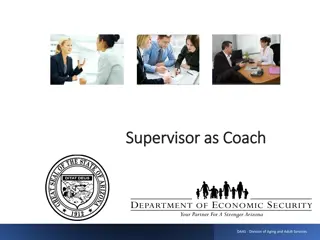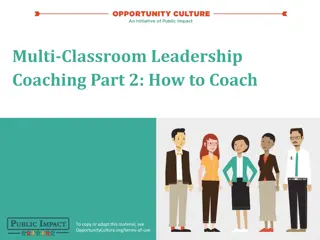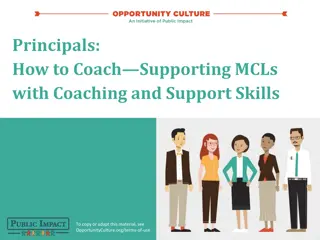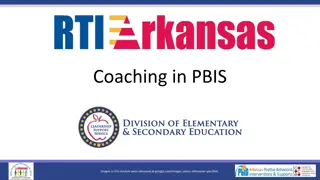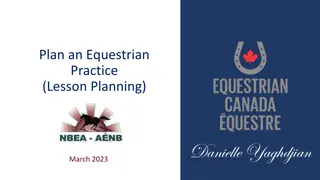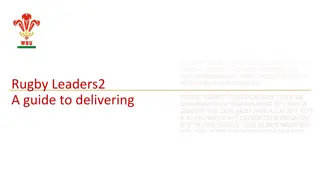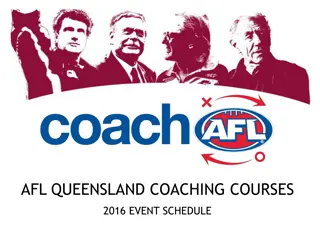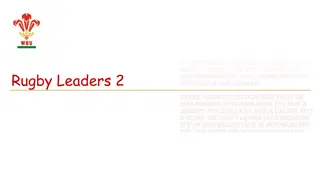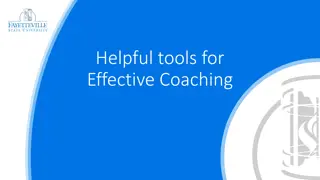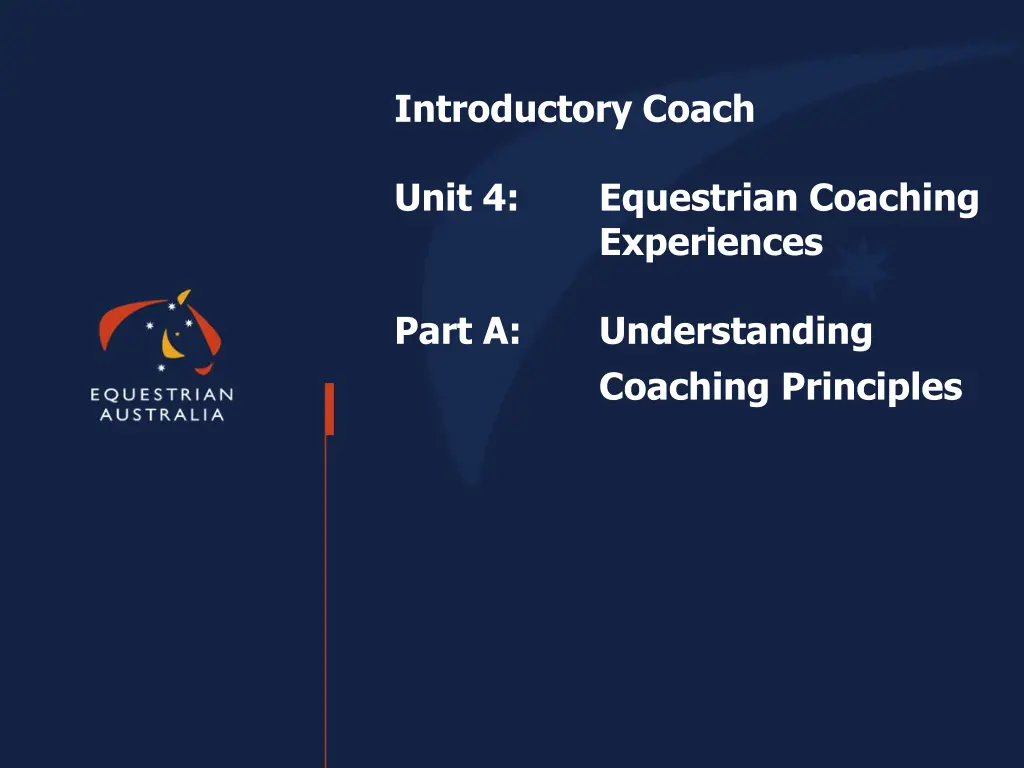
Equestrian Coaching Principles and Lesson Plans
Explore the fundamental principles of equestrian coaching, including creating effective lesson plans, setting goals, and utilizing different teaching approaches such as technique and game sense. Learn how lesson planning ensures rider safety, skill progression, and goal achievement in equestrian sports.
Download Presentation

Please find below an Image/Link to download the presentation.
The content on the website is provided AS IS for your information and personal use only. It may not be sold, licensed, or shared on other websites without obtaining consent from the author. If you encounter any issues during the download, it is possible that the publisher has removed the file from their server.
You are allowed to download the files provided on this website for personal or commercial use, subject to the condition that they are used lawfully. All files are the property of their respective owners.
The content on the website is provided AS IS for your information and personal use only. It may not be sold, licensed, or shared on other websites without obtaining consent from the author.
E N D
Presentation Transcript
Introductory Coach Unit 4: Equestrian Coaching Experiences Part A: Understanding Coaching Principles
4a.1 Creating Lesson Plans Elements of a lesson: Introductions including gear and safety checks Warm up Skill Demonstration and Instructions Skills practice Feedback and questioning Evaluation EQUESTRIAN AUSTRALIA
4a.1 Creating Lesson Plans Reasons for creating lesson plans Ensures horse and rider warm up and cool down Skill progression Assists in goal setting Setting a goal for a lesson which contribute towards the long terms goals of the rider Things are less likely to go wrong in a well planned and executed lesson Questioning in lesson helps the rider analyse their own performance and learn concepts more quickly Can you name some more reasons? EQUESTRIAN AUSTRALIA
4a.1 Creating Lesson Plans Goal for the Lesson: Element Activity Teaching Notes (what/how/why) Introduction including gear check, lesson goals, emergency procedure Warm up Skill Demonstration/Instruction Skills Practice Feedback/Questioning Evaluation EQUESTRIAN AUSTRALIA
4a.1 Creating Lesson Plans Two types of lesson approaches: Technique approach Game sense approach Game sense is most common in game and team sports, however they do have an application in equestrian sports EQUESTRIAN AUSTRALIA
4a.1 Creating Lesson Plans Technique approach The lesson is focused on practise and development of technical skills The technique/skill is taught in isolation and out of context of the game Does not require riders to think and apply techniques to situations required in riding a dressage test or jumping a course Focusing primarily on technique risks alienating those who will never develop the perfect technique An example in equestrian may be a lesson on the lunge to work on position alone EQUESTRIAN AUSTRALIA
4.a1 Creating Lesson Plans Game Sense The most obvious reason for coaches to adopt this approach is that games are fun and motivating There are many other benefits to this approach: Learn why before how the game shows why the skill is important Skill developed and applied in context Allows riders of differing abilities to participate, enjoy and contribute Abstract concepts such as tactics and game planning are put into context EQUESTRIAN AUSTRALIA
4a.1 Lesson Planning Benefits to the Coach of game sense approach: Fun environment increases motivation and encourages continued involvement Works well with children with short attention spans Learn to use the appropriate technique in context Group management easier when students having fun EQUESTRIAN AUSTRALIA
4a.1 Lesson Planning Benefits to the Coach of game sense approach: Athlete centred rather than Coach centred Coach talk is kept to a minimum. Students are challenged to find the solutions, rather than the Coach providing all the answers Accommodates students of varying abilities within the group Gives the Coach a chance to observe EQUESTRIAN AUSTRALIA
4a.1 Creating Lesson Plans 6 elements of a game Select the technical/tactical aspect to be emphasised Determine what will be the main problem/challenge for the riders to solve Devise a simple game that will develop the above aspects Develop some rules for the game Devise one progression to make the game more complex Design some questions and challenges to ask the participants EQUESTRIAN AUSTRALIA
4a.1 Creating Lesson Plans Game Sense in an equestrian context Pony club games perfect example put the basics of stop/go, aids, transitions between the paces and steering into context. Rather than riding 20m circles for an hour, put them into the context of a dressage test allows the rider to think about the preparation and execution, aids, position, transitions and the game plan for riding a test Jumping a course brings out the importance of rhythm, steering, balance, line, the need for impulsion, the uses of 2 and 3 point seat, understanding of distances etc etc How else could this approach be used? EQUESTRIAN AUSTRALIA
4a.1 Creating Lesson Plans How could you apply this approach to: a group of 6 primary school aged children who have the basics of walk, trot, canter A group of 4 teenage riders who are competing at preliminary eventing in each of the phases EQUESTRIAN AUSTRALIA
4a.2 Assessing Horse and Rider Discuss assessment of the rider s experience skills and fitness by questioning and observing Assume you have a group of 4 riders who have the basics of walk, trot and canter, stop/go/steer. What key knowledge and skills might you be looking for? What questions might you ask? EQUESTRIAN AUSTRALIA
4a.2 Assessing Horse and Rider Discuss assessment of the horse s temperament and schooling by questioning, observing and riding What will you be you looking for? What questions would you ask the rider? Are there any particular movements you might ask the rider to perform in order to make an assessment? When/why might you need to ride the horse yourself? EQUESTRIAN AUSTRALIA
4a.2 Assessing Horse and Rider Discuss the compatibility of various horse/rider combinations and activities that may be suitable What activities or movements might you ask the rider to perform in order to safely assess the suitability of the combination? What might you do in the case of an unsuitable match? EQUESTRIAN AUSTRALIA
4a.3 Plan/prepare training for beginner riders As a group - plan and prepare training for beginner riders in groups and individually, in accordance with EA and industry accepted coaching practices Discuss planning a short-term skill development (3-5 lessons) Discuss lesson content and suitability for groups (of varying ability) EQUESTRIAN AUSTRALIA
4a.4 Discuss the use of demonstrations Demonstrations are the most effective method of non verbal communication Demonstrations are important when explaining a more complex skill or idea Discuss the importance of demonstrations Discuss various methods of demonstration delivery EQUESTRIAN AUSTRALIA
4a.5 Skill Sequencing Discuss skill sequencing/development as it pertains to basic riding skills Re-examine the 3 stages of learning Discuss the teaching of simple riding skills Discuss teaching more complex riding skills by chaining Discuss how the game sense approach can be applied to developing basic riding skills EQUESTRIAN AUSTRALIA
4a.5 Skill Sequencing Grouping of Tasks Go to Activity Slip 4 Lesson Planning in the Intro Coach Workbook Candidates are required to group activities/tasks from the list to create 8 lesson plans Candidates need to determine the best sequence of these tasks for skill development/progression/learning Discuss how and why to do this? EQUESTRIAN AUSTRALIA
4a.6 Rider Assessment and Feedback Demonstrate an understanding of rider assessment and feedback Discuss: Identify different types of feedback Identify different assessment techniques EQUESTRIAN AUSTRALIA
Introductory Coach Unit 4: Equestrian Coaching Experience The Coach in Action Part B:
4b.1 Standard Practices and Ride Organisation Discuss effective standard practices effective ride organisation Arena etiquette and rules Use of standards commands Use of rider formations Effective voice and positioning Appropriate dress EQUESTRIAN AUSTRALIA
4b.2 Lessons on the Flat Discuss Essential skills for lesson on the flat Mounting/dismounting Holding reins Upright seat Basic control stop, go, turn Walk, sitting/rising trot, canter Use of Monkey grip/neck strap EQUESTRIAN AUSTRALIA
4b.3 Extend Beginner Skills Discuss Extend beginner skills in the upright position, paces and aids Identify common problems with the upright seat Improve rider coordination and application of aids How to achieve correct canter lead Use of correct rising trot diagonal Improve the rider s understanding of control of speed and quality of paces EQUESTRIAN AUSTRALIA
4b.4 Tracks, Figures, School Movements Discuss: How would you explain the following figures in walk, trot and canter Straight tracks diagonals, centre, quarter lines, turns across the arena 20m circles, 3 loop serpentine, figures of 8 within 20m circle EQUESTRIAN AUSTRALIA
4b.5 Lungeing the Rider Discuss why would you: lunge the horse and rider? Ensure correct fit and use of equipment/tack/attire including side reins Assess/identify suitable horses Assess/identify suitable area/environment Correctly handling of lunge rein/whip/ Correctly use of aids (voice/whip/body position) Maintain control at walk, trot, canter Progression in a lunge lesson including Upright position/problems/corrections Basic exercises to improve rider position EQUESTRIAN AUSTRALIA





